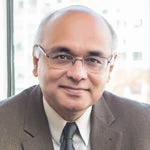 solar panels
solar panels
Small Island Developing States (SIDS), which are home to 65 million people and bastions of biodiversity, face unique challenges. Because they are small, their economies are not diversified and hence particularly vulnerable to external shocks, such as the collapse of tourism during COVID 19 or sky-rocketing energy and food prices in the wake of Russia’s invasion of Ukraine. They are also extremely vulnerable to the rising sea levels and extreme weather brought on by climate change.
Take the Maldives, for example.
Each year, the Maldives spends over 10 percent of its GDP to import diesel to meet its energy needs, and its import bill consequently shot up last year. In 2020, the Maldives GDP contracted by 34 percent as the COVID-19 pandemic shut down its tourism industry- the main driver of economic growth. Much of the country lies just a meter above sea level and on current projections is likely to be fully submerged by rising sea levels by the end of this century.
At last week’s World Bank Group - IMF Spring Meetings, we convened a high-level panel that discussed how small island developing states like the Maldives are addressing their vulnerability and taking action to build resilience. They are scaling up their renewable energy capacity, investing in green infrastructure, restoring mangroves to protect against coastal flooding, and ramping up their early warning systems. They are also committed to being part of the climate solution. Indeed, Maldives has declared the goal of becoming a net zero carbon emitter by 2030.
For Maldives shifting from expensive imported fossil fuels to domestic solar energy makes economic sense. But it requires a lot of upfront investment. The same is true in many other SIDS. According to the International Renewable Energy Agency (IRENA), some SIDS need an investment of around $5.9 billion annually to achieve their renewable energy targets by 2030. Because SIDS often have very constrained public borrowing capacity, the private sector must play a critical role to fill the financing gap and put the energy transition within reach.
Many are skeptical that this is possible – but not us at the World Bank Group (WBG). Two WBG supported projects in the Maldives show how with the right financial structure, private investment can become a game changer for scaling up renewable energy, building climate resilience and moving towards decarbonization. With just $12.4 million in World Bank concessional financing, the Accelerating Sustainable Private Investments in Renewable Energy (ASPIRE) and the Accelerating Renewable Energy Integration and Sustainable Energy Project (ARISE) projects are helping to install a total of 53.5 megawatts of solar panels on the islands and on the open ocean, build 40 MWh of battery storage solutions for the country and upgrade the electricity grid to include cleaner energy sources.
The unique thing about these projects is that the WBG leveraged another $140 million in financing – or twelve times the amount of funding for every dollar spent -- including from the private sector.
What made this possible? Guarantees from the International Development Association (IDA) and Multilateral Investment Guarantee Agency (MIGA) will help mitigate the risks that held investors back from putting their money into a small island with a volatile economy. By allaying investors’ fears and attracting increased private investment, this risk mitigation package has made renewable energy projects more financially sustainable for the Maldives.
The proof is in the numbers.
In 2014, the first solar project in the Maldives under ASPIRE attracted only four investors. In 2020, the number of bids went up to 25. Buoyed by the risk mitigation structure, there was a record 63 bids in 2022. Greater private investment has driven down costs. For example, the power purchase price -- which is the purchase price per unit of electricity that a power company agrees to with a solar power plant - decreased over these years from 21 US cents per unit to a record low of 9.8 cents per unit of electricity, significantly below the current price of imported fossil energy. This will lead to savings for the Maldives government, which has so far been subsidizing power for its consumers. In fact, the projects will help reduce the Maldives’ spending on energy imports by approximately $30 million annually and by $750 million over 25 years.
Their experience could be instructive for other countries that are pursuing the transition to renewable energy. Currently, Singapore is building a self-contained power grid on Semakau Island that uses green hydrogen to convert solar and wind energy into stored fuel that can generate electricity when needed. Meanwhile, the small nation of Cabo Verde off the coast of Africa is embarking on an extensive multi-faceted strategy to mobilize private and public capital for energy sector investments. In Jamaica, legislation to promote renewable energy has encouraged private consumers to install solar panel systems and integrate them with the national grid.
Renewable energy is critical to ensuring energy security and powering economic development more sustainably, for millions of people . And private sector financing is vital to unlocking the potential of renewable energy in SIDS. The Maldives experience shows how this can be done, and proves that despite their limitations, SIDs can work with the private sector and other partners to achieve big renewable energy ambitions and build resilience.





Join the Conversation